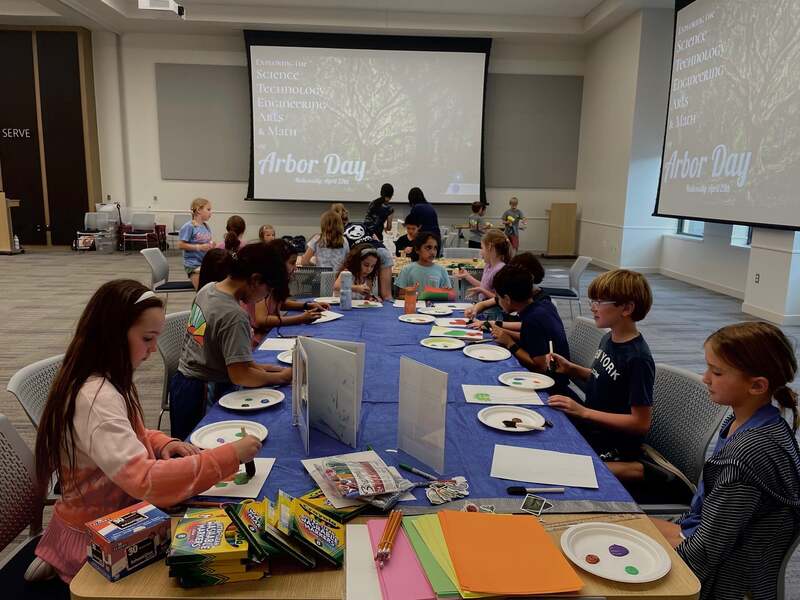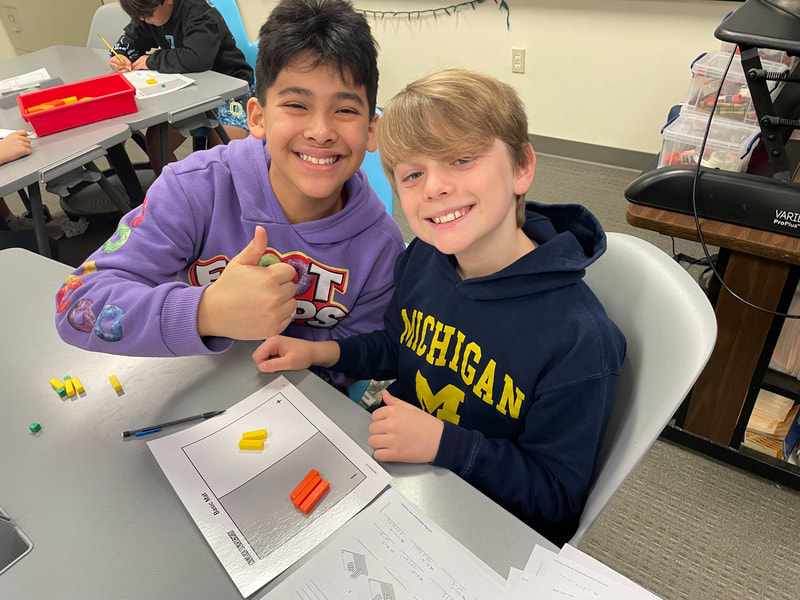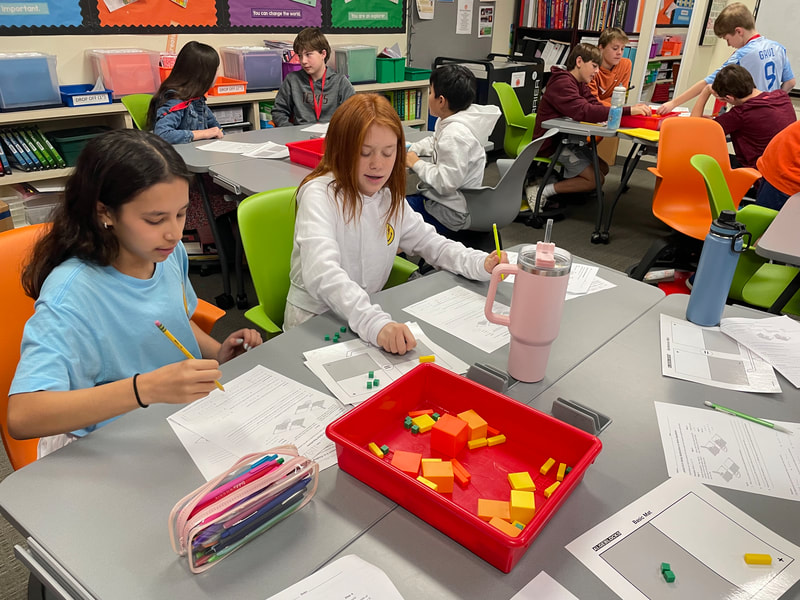m real bet casino
|
Movement-efficiency athletic training discipline "Parcours" redirects here. For the term used in cycle racing, see Glossary of cycling § P Parkour ( French: 🏧 [paʁkuʁ]) is an athletic training discipline or sport in which practitioners (called traceurs) attempt to get from point A to 🏧 point B in the fastest and most efficient way possible, without assisting equipment and often while performing flips. [5] With roots 🏧 in military obstacle course training and martial arts, parkour includes flipping, running, climbing, swinging, vaulting, jumping, plyometrics, rolling, and quadrupedal 🏧 movement-whatever is suitable for a given situation. [6][7] Parkour is an activity that can be practiced alone or with others, and 🏧 is usually carried out in urban spaces, though it can be done anywhere. [8][9] It involves seeing one's environment in a 🏧 new way, and envisioning the potential for navigating it by movement around, across, through, over and under its features.[10][11] Although a 🏧 traceur may perform a flip as well as other aesthetic acrobatic movements, these are not essential to the discipline. [12] Rather, 🏧 they are central to freerunning, a discipline derived from parkour but emphasising artistry rather than efficiency. The practice of similar movements 🏧 had existed in communities around the world for centuries,[13] notably in Africa[14] and China,[15] the latter tradition (qinggong) popularized by 🏧 Hong Kong action cinema (notably Jackie Chan) during the 1970s to 1980s. [15][16][17] Parkour as a type of movement was later 🏧 established by David Belle when he and others founded the Yamakasi in the 1990s and initially called it l'art du 🏧 déplacement. [18][19] The discipline was popularised in the 1990s and 2000s through films, documentaries, video games, and advertisements. [13][20][21]Etymology [ edit ] The 🏧 word parkour derives from parcours du combattant (obstacle course), the classic obstacle course method of military training proposed by Georges 🏧 Hébert. [22][23][24] Raymond Belle used the term "les parcours" to encompass all of his training including climbing, jumping, running, balancing, and 🏧 the other methods he undertook in his personal athletic advancement. [25] His son, David, further developed his father's methods and achieved 🏧 success as a stuntman, and one day on a film set showed his 'Speed Air Man' video to Hubert Koundé. Koundé 🏧 suggested he change the "c" of "parcours" to a "k" because it was stronger and more dynamic, and to remove 🏧 the silent "s" for the same reason, forming "parkour".[26] A practitioner of parkour is called a traceur, with the feminine form 🏧 being traceuse or simply a "Parkourist". [6] They are nouns derived from the French verb tracer, which normally means "to trace", 🏧 as in "tracing a path", in reference to drawing. [27] The verb tracer used familiarly means: "to hurry up". [28] The term 🏧 traceur was originally the name of a parkour group headed by David Belle which included Sébastien Foucan and Stéphane Vigroux.[29] A 🏧 jam refers to a meeting of traceurs, involving training lasting anywhere from hours to several days, often with people from 🏧 different cities. The first parkour jam was organised in July 2002 by Romain Drouet, with a dozen people including Sébastien Foucan 🏧 and Stéphane Vigroux. History [ edit ]Origins [ edit ] The practice of similar movements have existed in various communities around the 🏧 world for centuries prior to the foundation of a parkour movement, which was influenced by these earlier traditions. [13][16][17] Such athletic 🏧 traditions had existed among various indigenous tribes in Africa for centuries. [14] A similar discipline in Chinese culture is qinggong, a 🏧 Chinese martial arts training technique that also dates back centuries. It was notably taught at the Peking Opera School in the 🏧 20th century; the school's most notable students are the Seven Little Fortunes, including Sammo Hung and most famously Jackie Chan, 🏧 providing a basis for their acrobatic stunt work in Hong Kong action cinema from the 1970s onwards.[15][16][17] Georges Hébert [ edit 🏧 ] In Western Europe, a forerunner of parkour was developed by French naval officer Georges Hébert, who before World War I 🏧 promoted athletic skill based on the models of indigenous tribes he had met in Africa. [14] He noted, "their bodies were 🏧 splendid, flexible, nimble, skillful, enduring, and resistant but yet they had no other tutor in gymnastics but their lives in 🏧 nature. "[14] His rescue efforts during the 1902 eruption of Mount Pelée on Saint-Pierre, Martinique reinforced his belief that athletic skill 🏧 must be combined with courage and altruism. [14] Hébert became a physical education tutor at the college of Reims in France. Hébert 🏧 set up a "méthode naturelle" (natural method) session consisting of ten fundamental groups: walking, running, jumping, quadrupedal movement, climbing, balancing, 🏧 throwing, lifting, self-defence, and swimming. These were intended to develop "the three main forces": energetic (willpower, courage, coolness, and firmness), moral 🏧 (benevolence, assistance, honour, and honesty), and physical (muscles and breath). [30] During World War I and World War II, teaching continued 🏧 to expand, becoming the standard system of French military education and training. Inspired by Hébert, a Swiss architect developed a "parcours 🏧 du combattant"[31]-military obstacle course-the first of the courses that are now standard in military training and which led to the 🏧 development of civilian fitness trails and confidence courses.[14] Raymond and David Belle [ edit ] Born in 1939 in Vietnam, Raymond Belle 🏧 was the son of a French physician and Vietnamese mother. During the First Indochina War, his father died and he was 🏧 separated from his mother, after which he was sent to a military orphanage in Da Lat at the age of 🏧 seven. He took it upon himself to train harder and longer than everyone else in order never to be a victim. At 🏧 night, when everyone else was asleep, he would be outside running or climbing trees. He would use the military obstacle courses 🏧 in secret, and also created courses of his own that tested his endurance, strength, and flexibility. Doing this enabled him not 🏧 only to survive the hardships he experienced during his childhood, but also eventually to thrive. After the Battle of Dien Bien 🏧 Phu in 1954, he returned to France and remained in military education until the age of 19, when he joined 🏧 the Paris Fire Brigade, a French Army unit.[13][32][33] David Belle is considered the founder of parkour. Raymond's son, David Belle, was born 🏧 in 1973. He experimented with gymnastics and athletics but became increasingly disaffected with both school and the sports clubs. As he got 🏧 older, he learned of his father's exploits and was increasingly curious about what had enabled his father to accomplish these 🏧 feats. Through conversations with his father, he realised that what he really wanted was a means to develop skills that would 🏧 be useful to him in life, rather than just training to kick a ball or perform moves in a padded, 🏧 indoor environment.[13][25] Through conversations with his father, David learned about this way of training that his father called "parcours". He heard his 🏧 father talk of the many repetitions he had done in order to find the best way of doing things. He learned 🏧 that for his father, training was not a game but something vital which enabled him to survive and to protect 🏧 the people he cared about. David realised that this was what he had been searching for, and so he began training 🏧 in the same way. After a time, he found it far more important to him than schooling and he gave up 🏧 his other commitments to focus all his time on his training. [25]Yamakasi [ edit ] David initially trained on his own, and 🏧 after moving to Lisses, found other young men (including his cousins) who had similar desires, and they began to train 🏧 together. [1] The group eventually included David Belle, Sébastien Foucan, Châu Belle Dinh, Williams Belle, Yann Hnautra, Laurent Piemontesi, Guylain N'Guba 🏧 Boyeke, Malik Diouf, and Charles Perrière. The group began calling themselves the Yamakasi, from the Lingala ya makási, meaning strong in 🏧 one's person, or "strong man, strong spirit"[34] (see § Name and split below). The group drew inspiration from Asian culture and 🏧 Asian martial arts, notably the acrobatics of Jackie Chan such as qinggong displays in his Hong Kong action films,[16][35][17] and 🏧 the training philosophy of Bruce Lee,[36] considering the latter to be the "unofficial president" of their group. [17] The group also 🏧 was influenced by the Japanese shōnen manga and anime series Dragon Ball, in which the heroes attained extraordinary abilities through 🏧 hard work, as well as the martial arts films of Belgian actor Jean-Claude Van Damme. [17]Discipline [ edit ] The group put 🏧 themselves through challenges that forced them to find the physical and mental strength to succeed. Examples included training without food or 🏧 water, or sleeping on the floor without a blanket to learn to endure the cold. [37] For example, no one in 🏧 the group was permitted to be late for training, as it would hold back the whole group. If any member completed 🏧 a challenge, everyone else had to do the same thing. [38] During their training, no one was allowed to complain or 🏧 be negative. Few excuses were allowed. For instance, if someone claimed that his shoes were too worn out in to make a 🏧 jump, he had to do it anyway, even if it meant doing the jump barefoot. [39] At the same time, everyone 🏧 was required to have knowledge of their own limits.[40] Respecting one's health and physical well-being was one of the foundations of 🏧 the group. If any member hurt himself during or after the execution of a movement, the movement was deemed a failure. A 🏧 movement executed only once was not considered an achievement; only with repetition was the challenge complete. Every movement had to be 🏧 repeated at least ten times in a row without the traceur having to push his limits or sustaining any injury. If 🏧 any mistake was made by any traceur in the group everyone had to start all over again.[38] Humility was an important 🏧 principle. [40] No traceur was allowed to feel superior to someone else, for example, by executing a movement only to show 🏧 off in front of someone who could not perform the movement. If any traceur in the group claimed that he had 🏧 completed a difficult and dangerous challenge that should not be attempted unaided, he had to prove his claims by doing 🏧 the challenge again. Anyone who lied violated the principle of humility.[38] To join the group, new members had to be recommended by 🏧 an existing member and then pass tests to evaluate their motivation for joining. [39] Despite the huge emphasis on the collective, 🏧 each traceur had to progress and develop independently-"to create the means to be yourself"[41]-and there was a complete trust within 🏧 the group. [40] Every traceur was to encourage the others and show confidence through their behaviour. [42] If a member violated the 🏧 principles, the group could meet without the offending person to discuss various punishments. Anyone deemed unsuitable could be temporarily or even 🏧 permanently banned from the group in order to uphold its disciplines and values.[43] Name and split [ edit ] In 1997, David 🏧 Belle's brother Jean-François invited the group to perform for the public in a firefighter show in Paris. [34] For the performance, 🏧 the group named themselves Yamakasi, from the Congolese Lingala ya makási, meaning strong in one's person, or "strong man, strong 🏧 spirit". Sébastien Foucan also invented a name for what they were doing: "l'art du déplacement" (French for "the art of movement"). [34] 🏧 The firefighter performance caused both positive and negative attention. Some members of the group were concerned how the public would view 🏧 their discipline since the performance did not demonstrate all aspects of it, such as their hard training and their values 🏧 and ethics. Jean-François also sent pictures and video of the group to a French TV programme, and the popularity of parkour 🏧 began to increase. A series of television programmes in various countries subsequently featured video footage of the group, and they began 🏧 to get more requests for performances. During this time, conflicting interests arose within the group. Sébastien Foucan wanted to teach more rather 🏧 than to train more, and David Belle had the ambition to become an actor. David and Sébastien chose to leave the 🏧 group, and used the name "parkour" to describe their activity (see § Etymology above). The seven remaining Yamakasi members continued to 🏧 use the term l'art du déplacement[13][44] (see § Derivative terminologies and disciplines below). Organizations [ edit ] International parkour organizations include the 🏧 World Freerunning and Parkour Federation, established in 2007, who have worked with MTV to produce parkour-related shows. [45]Philosophy [ edit ] A 🏧 beginner takes a leap in Seattle's Freeway Park under the guidance of experienced practitioners (2012). According to Williams Belle, the philosophies 🏧 and theories behind parkour are an integral aspect of the art, one that many non-practitioners have never been exposed to. Belle 🏧 says he trains people because he wants it "to be alive" and "for people to use it". [46] Châu Belle explains 🏧 it is a "type of freedom" or "kind of expression"; that parkour is "only a state of mind" rather than 🏧 a set of actions, and that it is about overcoming and adapting to mental and emotional obstacles as well as 🏧 physical barriers. [46] Traceur Dylan Baker says, "Parkour also influences one's thought processes by enhancing self-confidence and critical thinking skills that 🏧 allow one to overcome everyday physical and mental obstacles". [46][47][48] A study by Neuropsychiatrie de l'Enfance et de l'Adolescence (Neuropsychiatry of 🏧 Childhood and Adolescence) in France found traceurs seek more excitement and leadership situations than gymnasts do.[49] Academic research on parkour has 🏧 tended to describe how parkour provides a novel way of interacting with the urban environment that challenges the use and 🏧 meaning of urban space, metropolitan life, and embodiment.[50] A newer convention of parkour philosophy has been the idea of "human reclamation". [51] 🏧 Andy Tran of Urban Evolution clarifies it as "a means of reclaiming what it means to be a human being. It 🏧 teaches us to move using the natural methods that we should have learned from infancy. It teaches us to touch the 🏧 world and interact with it, instead of being sheltered by it. "[51] Another traceur[who?] writes, "It is as much as a 🏧 part of truly learning the physical art as well as being able to master the movements; it gives you the 🏧 ability to overcome your fears and pains and reapply this to life, as you must be able to control your 🏧 mind in order to master the art of parkour."[52] Competition [ edit ] A campaign was started on 1 May 2007 by 🏧 the Parkour. NET portal to preserve parkour's philosophy against sports competition and rivalry. [53][54] In the words of Erwan Le Corre, "Competition 🏧 pushes people to fight against others for the satisfaction of a crowd and/or the benefits of a few business people 🏧 by changing its mindset. Parkour is unique and cannot be a competitive sport unless it ignores its altruistic core of self-development. If 🏧 parkour becomes a sport, it will be hard to seriously teach and spread parkour as a non-competitive activity. And a new 🏧 sport will be spread that may be called parkour, but that won't hold its philosophical essence anymore. "[53] Red Bull's sponsored 🏧 athlete for parkour, Ryan Doyle, has said, "Sometimes people ask, 'Who is the best at parkour?' and it is because 🏧 they don't understand what Parkour is; 'Who is the best?' is what you would say about a sport, and parkour 🏧 is not a sport-it is an art, it's a discipline. That's like saying, 'What's the best song in the world?'"[55] This 🏧 seems to be the consensus among many professional traceurs who view parkour as a lifestyle more than as a set 🏧 of tricks, as has been popularised by YouTube and most media exposure.[citation needed] There are competitions that use parkour as the 🏧 main influence for formatting and judging criteria. Sport Parkour League's "North America Parkour Championships" hosts a series of local and regional 🏧 qualifier events which culminate in a final event in Vancouver, B.C. [56] Red Bull's Art of Motion event[57] is the longest 🏧 running and highest profile professional freerunning competition. David Belle [ edit ] In his 2009 book Parkour, David Belle stressed that the 🏧 most important aspect of parkour is not the physical movements, but rather the practitioner's mentality and understanding of its principles. "When 🏧 young trainees come to see me and give me videos telling me to check out what they are doing, I 🏧 just take the tape and throw it away. What I'm interested in is what the guy's got in his head, if 🏧 he has self-confidence, if he masters the technique, if he has understood the principles of parkour. I just can't deal with 🏧 guys who do Parkour because they saw videos on the Internet and thought it was kinda cool and want to 🏧 do even better. "[58] Further, he states the importance of traceurs being aware of their abilities and limitations, and developing in 🏧 their own way. "When a young person asks me, 'Can you show me how to do this?' I simply answer, 'No, 🏧 I am going to show you how I do it. Then, you'll have to learn with your own technique, your own 🏧 way of moving, your style, your abilities and your limitations. You are going to learn to be yourself, not someone else 🏧 along the way.'"[59] The philosophy of parkour has been compared to that of martial arts. [60] In an interview with The New 🏧 Yorker, David Belle acknowledges the influence, "There's a quote by Bruce Lee that's my motto: 'There are no limits. There are 🏧 plateaus, but you must not stay there, you must go beyond them. A man must constantly exceed his level. ' If you're 🏧 not better than you were the day before, then what are you doing-what's the point?"[31] In an interview with the 🏧 press, Belle explained that parkour is a training method for warriors. "So many people try to train easy-'Come do parkour! It's 🏧 really cool!' But if tomorrow I made you do real training, you would end up crying. That's what you need to 🏧 know: you are going to cry, you are going to bleed and you are going to sweat like never before. "[61] 🏧 In his book, Belle also quotes his father Raymond, "If two roads open up before you, always take the most 🏧 difficult one. Because you know you can travel the easy one."[62] Belle is an influential proponent of discipline and control in parkour, 🏧 saying, "Precision is all about being measured," and going on to describe parkour as an art that requires huge amounts 🏧 of repetition and practice to master. [63] "With parkour, I often say, 'Once is never'. In other words, someone can manage a 🏧 jump one time but it does not mean anything. It can be luck or chance. When you make a jump, you have 🏧 to do it at least three times to be sure you can actually do it. It's an unavoidable rule. Do it the 🏧 hard way and stop lying to yourself. When you come for training, you have to train. Even if it means doing the 🏧 same jump fifty or a hundred times. "[59] To its founder, parkour is a method of self-refinement, used for learning to 🏧 control and focus oneself. Practice [ edit ]Movement [ edit ] A practitioner performing a wall run While there is no official list 🏧 of "moves" in parkour, the style in which practitioners move often sets them apart from others,[7] and there are a 🏧 number of named movements that are characteristic,[18] for example:[64][65][66] "Parkour roll": Rolling to absorb impacts from larger drops, moving diagonally over 🏧 a shoulder to convert momentum from vertical to horizontal. "Precision jump": Jumping and landing accurately with the feet on small or 🏧 narrow obstacles. "Arm jump": Jumping and landing feet-first on a vertical surface, catching the horizontal top with the hands. "Wall run": Running 🏧 toward a high wall and then jumping and pushing off the wall with a foot to reach the top of 🏧 the wall. "Climb up": Moving from a position hanging from a wall-top or ledge, to standing on the top or vaulting 🏧 over to the other side. Equipment [ edit ] A traceuse vaults a railing. Parkour is practiced without traditional equipment, though items such 🏧 as bars, walls, and boxes found in the environment in which the parkour is being practiced in, are utilised to 🏧 better navigate the area. Practitioners normally train wearing light, non-restrictive casual clothing. [67][68] Traceurs who wear gloves are rare-bare hands are considered 🏧 better for grip and tactile feedback. [69][70] Light running shoes with good grip and flexibility are encouraged because they allow for 🏧 more natural and fluid movements. Practitioners often use minimalist shoes, sometimes as a progression to bare feet, for better sensitivity and 🏧 balance, while others prefer more cushioning for better absorption of impacts from large jumps. [71] Barefoot training is done by some 🏧 for movement competency without gear-David Belle noted that "bare feet are the best shoes. "[72] Various sneaker manufacturers have developed shoes 🏧 specifically for parkour and freerunning. Many other companies around the world have started offering clothing targeted at parkour.[73]Risks [ edit ] Trespassing 🏧 [ edit ] Traceurs in Lisses re-painting a wall and repairing shoe scuff marks from parkour A notice on a wall of 🏧 the Strasbourg Museum of Modern and Contemporary Art in 2012 prohibiting parkour (removed in 2018) Parkour is not widely practiced in 🏧 dedicated public facilities. Although efforts are being made to create places for it, many traceurs do not like the idea, as 🏧 it is contradictory to parkour's values of adaptation, creativity, and freedom. [74] Traceurs practice parkour in both rural and urban areas 🏧 such as gyms, parks, playgrounds, offices, and abandoned structures. Concerns have been raised regarding trespassing, damage of property,[75] and use of 🏧 inappropriate places such as cemeteries. [76] Many parkour organizations around the globe support the Leave No Trace initiative, an urban version 🏧 of the outdoor conservation ethic created by the Seattle nonprofit Parkour Visions in 2008, promoting safety, respect for the spaces 🏧 used and their other users, and sometimes includes picking up rubbish to leave areas in better condition than they were 🏧 found. [77][78][79][80][81] Injuries and deaths [ edit ] Concerns have been raised by law enforcement and fire and rescue teams about the risks 🏧 inherent in jumping off high buildings. [82] They argue that practitioners are needlessly risking damage to both themselves and rooftops by 🏧 practicing at height, with police forces calling for practitioners to stay off the rooftops. [75][83][84] Some practitioners of parkour agree that 🏧 such behaviour should be discouraged.[83][85][86][87] Because parkour philosophy is about learning to control oneself in interaction with the environment, many parkour 🏧 experts consider serious injury evidence of the traceur's failure to follow the precepts of the discipline, specifically, knowing one's limitations. Daniel 🏧 Ilabaca, co-founder of the World Parkour and Freerunning Federation, said, "Thinking you're going to fail at something gives you a 🏧 higher risk of doing just that. Committing to something you're thinking or knowing you will land gives you a higher chance 🏧 of landing or completing the task. "[88] On biomechanical grounds, studies found parkour landing techniques result in lower landing forces in 🏧 comparison with traditional sport techniques. [89][90] In a survey of parkour-related emergency department visits in the United States between 2009 and 🏧 2015, most injuries were reportedly caused by landing or from striking objects.[91] American traceur Mark Toorock said injuries are rare "because 🏧 participants rely not on what they can't control-wheels or the icy surfaces of snowboarding and skiing-but their own hands and 🏧 feet. " Lanier Johnson, executive director of the American Sports Medicine Institute, said that many of the injuries are not reported.[92]Impact 🏧 [ edit ] Initially featured in films of French director/producer Luc Besson, parkour was first introduced to the British public by 🏧 the BBC One TV channel trailer Rush Hour in April 2002. It featured David Belle leaping across London's rooftops from his 🏧 office to home, in an attempt to catch his favourite BBC programme,[93] and captured the imagination of many viewers, especially 🏧 when they learned no special effects or wires were used. [94] This advertisement, along with others for Coca-Cola, Nike, and Toyota, 🏧 had a large-scale impact on public awareness of parkour.[18][95] The creation of parkour show-reels and documentaries has been crucial to the 🏧 spread of parkour, and is common in the parkour community. [13][44] Jump London is a 2003 documentary explaining some of the 🏧 background of parkour, culminating with Sébastien Foucan, Johann Vigroux, and Jérôme Ben Aoues demonstrating their parkour skills. Jump London changed the 🏧 presence of parkour in the UK almost overnight and is widely credited for inspiring a new generation of traceurs. [50] It 🏧 was followed by Jump Britain in 2005. Both Jump films were shown in more than 80 countries, thereby introducing the discipline 🏧 and its philosophy to an unprecedented global audience. Both films have been cited by numerous practitioners as their motivation for taking 🏧 up the discipline. The Australian version of 60 Minutes broadcast a segment about parkour on 16 September 2007, featuring Foucan and 🏧 Stephane Vigroux.[96] Parkour is not defined by a set of rules or guidelines, a feature which has proven particularly attractive to 🏧 young people, allowing them to explore and engage in the activity on their own terms. It can be easily accepted by 🏧 all cultures as a means of personal expression and recreation. [97] For example, in 2010 The New York Times published a 🏧 short video featuring three young men from the Gaza Strip who were active members of the parkour community. [98] In 2014, 🏧 the BBC covered youth parkour participation in Jammu and Kashmir. Zahid Shah founded the Kashmir Freerunning and Parkour Federation, finding hope 🏧 in the non-violent discipline of parkour.[99] Entertainment [ edit ] Parkour has become a popular element in action sequences, with film directors 🏧 hiring parkour practitioners as stunt performers. The first director to do so was Luc Besson, for the film Taxi 2 in 🏧 1998, followed by Yamakasi in 2001 featuring members of the original Yamakasi group, and its sequel Les fils du vent 🏧 in 2004. Also in 2004, Besson wrote District 13, another feature film involving advanced parkour chase sequences, starring David Belle and 🏧 Cyril Raffaelli,[100][101] followed by the sequel District 13: Ultimatum in 2009 and remade in English as Brick Mansions in 2014. In 🏧 2006 the James Bond film Casino Royale featured Sébastien Foucan in a chase taking place early in the movie, sparking 🏧 renewed media interest in parkour. [31] Along with The Bourne Ultimatum (2007), Casino Royale is credited with starting a new wave 🏧 of Parkour-inspired stunts in Western film and television. [102] Parkour was prominent in Live Free or Die Hard (2007),[103] again with 🏧 stuntman/actor Cyril Raffaelli, and Prince of Persia: The Sands of Time (2010), choreographed by David Belle. [104] Several films besides Yamakasi 🏧 are about thieves who use parkour, such as Breaking and Entering (2006),[100][101] Run (2013),[105] and Tracers (2015). The 2011 film Freerunner 🏧 is about eight freerunners racing through a city for survival. The 2019 Netflix film 6 Underground featured several parkour scenes choreographed 🏧 and performed by team Storror. [106][107] Parkour also featured in Dhoom 3 (2013),[108] Bang Bang! (2014) and Aadhi (2018).[109] Parkour is also 🏧 featured on TV. MTV's show Ultimate Parkour Challenge premiered as a one-hour special in October 2009 starring the athletes of the 🏧 World Freerunning & Parkour Federation. This was followed in May 2010 with a six-episode series of the same name. The athletes were 🏧 Daniel Ilabaca, Tim Shieff, Ryan Doyle, Michael Turner, Oleg Vorslav, Ben Jenkin, Daniel Arroyo, Pip Andersen and King David. The programme 🏧 format was a two-part weekly competition in different Southern California locations.[110] Professional wrestler John Hennigan is a long-time practitioner of parkour 🏧 and often incorporates it into his wrestling style, with the WWE giving him the nickname "The Prince of Parkour". [111][112] Actor 🏧 Stephen Amell learned parkour at Tempest Academy in preparation for his role as Oliver Queen in the television series Arrow,[113] 🏧 and co-star Caity Lotz is also a practitioner.[114] Modern video games frequently include aspects of parkour as major game-play elements. Since the 🏧 series' inception, Tomb Raider series has included increasingly numerous parkour elements. [115] The Assassin's Creed series also makes heavy use of 🏧 parkour movement (called freerunning in the game). [116][117][118] The Mirror's Edge games are heavily inspired by parkour, consisting entirely of efficiently 🏧 moving around buildings, rooftops, and other obstacles. [119][120] Brink introduced a parkour mechanic into a realistic first-person shooter. [121] Prince of Persia 🏧 and Dying Light include a central parkour mechanic,[122][123] while Crackdown and Crackdown 2 include an emphasis on gripping and vaulting 🏧 from ledges and protruding objects. [124] Tony Hawk's American Wasteland allows the character to use several freerunning techniques while not on 🏧 the skateboard. [125] Tron Evolution's basic movements and combat were based on parkour and capoeira.[126] Military training [ edit ] Although parkour itself 🏧 grew out of military obstacle-course training,[13][32] it has become a separate discipline. After the attention that parkour received following the 2006 🏧 film Casino Royale, military forces around the world began looking for ways to incorporate elements from parkour into military training. A 🏧 physical trainer with the Royal Marines trained with parkour practitioners with hopes of introducing some of their techniques to his 🏧 own students. [127] Colorado Parkour began a project to introduce elements from parkour into the U.S. military[128] and one San Diego staff 🏧 sergeant trained US Marines in parkour.[129] Scientific research and applications [ edit ] Studies have found that in exercises such as the 🏧 standing long jump, depth jump, and vertical jump, parkour athletes outperform physical educators,[citation needed] gymnasts, and power athletes. [130] Parkour training 🏧 is especially linked with the development of eccentric load resistance and jumping ability. A study into the mechanics of the standing 🏧 long jump showed that experienced traceurs use a lower take off angle than beginners (-25.6° vs -34°). [131] Wakai and Linthorne 🏧 had previously estimated the optimal angle to be close to 22.6°.[132] Studies and experiments have integrated parkour kinaesthetics into robotics. [133][134][135][136] Derivative terminologies 🏧 and disciplines [ edit ] In September 2003, Mike Christie's documentary Jump London, starring Sébastien Foucan, was released. In the documentary, the 🏧 term "freerunning" was used as an attempt to translate "parkour", in order to make it more appealing to the English-speaking 🏧 audience. [137] Foucan decided to keep using the term "freerunning" to describe his discipline, to distinguish it from David Belle's methods.[138][139] The 🏧 remaining seven Yamakasi members continued to use the term "l'art du déplacement", also not wanting to associate it too closely 🏧 with parkour. Similar to Sébastien's freerunning, l'art du déplacement is less about the hard discipline of the original Yamakasi group; rather, 🏧 it takes a participatory approach focused on making the teaching more accessible. David Belle kept the term "parkour", saying the group 🏧 contributed to the development of it, but that his father was the source of his motivation and had verbally communicated 🏧 this method only to him.[139] Both parkour and freerunning encompass the ideas of overcoming obstacles and self-expression; in freerunning, the greater 🏧 emphasis is on self-expression. [138] Although the differences between the disciplines are often hard to discern, practitioners tend to aspire to 🏧 parkour and describe themselves as traceurs rather than as freerunners. [140]See also [ edit ]Citations [ edit ] General and cited sources 🏧 [ edit ] Angel, Julie (2011).Ciné Parkour .Julie Angel. ISBN 978-0-9569717-1-5 . Belle, David & Perriére, Charles. Parkour: From the Origins to the Practise 🏧 . Belle, David (2009).Parkour.Intervista. ISBN 978-2-35756-025-3 . {nl}nline, é comum encontrar promoções que oferecem dinheiro grátis para que você possa rimentar os jogos antes de começar a apostar 😄 com seu próprio dinheiro. Essas ofertas em ser uma ótima maneira de aumentar suas chances de ganhar, além de dar a 😄 você a nidade de avaliar a plataforma de jogo antes de se comprometer com ela. A seguir, você ncontrará uma lista dos 😄 melhores casinos online que oferecem dinheiro grátis para caça niquel blaze888 betwayfred ring apostasapostas de jogos da copa. casino online no deposit bonus code Casino 4.9/5 Wild PlayStation4 / 5 WILD250 2. TG-Casino 4,9/195, N/2A Reivindicação a 3. Todos os jogos-4,8 de05 SIGNUP1000 IV da 6️⃣ Bovada quatro:7/10-5 CAWELCOME100 Aplicativos De Cassino para 2024 - Top Real Money Mobile CaféS... Techopedia : Jogosde azar resenha,. {nl} |
como fazer aposta da loteria pela internet
aposta gratis futebol |
Casinos em m real bet casino 2024: O Que Esperar para o Cenário Brasileiro?
No mundo dos jogos de azar, é importante estar sempre atualizado sobre as últimas tendências e novidades. Neste artigo, exploraremos as perspectivas para a indústria de casinos no Brasil em m real bet casino 2024. Então, continue lendo para saber o que esperar para o cenário brasileiro!
1. Mais Regulação e Legalização
Em 2024, espera-se que o setor de jogos de azar no Brasil se torne mais regulamentado e legalizado. Isso significa que haverá mais oportunidades de investimento e criação de empregos no setor. Além disso, os jogadores poderão desfrutar de um ambiente de jogo mais seguro e justo.
2. Crescimento do Mercado Online
Com a pandemia de COVID-19, o mercado de jogos de azar online cresceu exponencialmente em m real bet casino todo o mundo. No Brasil, espera-se que essa tendência continue em m real bet casino 2024. Isso significa que haverá mais opções de jogos e promoções disponíveis para os jogadores online.
3. Novos Casinos Físicos
Embora o mercado online esteja em m real bet casino alta, também espera-se que haja um crescimento no número de casinos físicos no Brasil em m real bet casino 2024. Isso significa que os entusiastas de jogos de azar poderão desfrutar de uma experiência de jogo em m real bet casino pessoa, além de jogos online em m real bet casino suas casas.
Em resumo, o cenário de casinos no Brasil em m real bet casino 2024 está repleto de possibilidades e oportunidades. Com mais regulamentação e legalização, um crescimento contínuo no mercado online e novos casinos físicos, o futuro parece brilhante para a indústria de jogos de azar no país.
No entanto, é importante lembrar que o jogo deve ser responsável e divertido. Se você ou alguém que conhece está lutando com a ludopatia, procure ajuda imediatamente. Existem muitos recursos disponíveis para ajudar aqueles que lutam contra esse problema.
No geral, o cenário de casinos no Brasil em m real bet casino 2024 é empolgante e promissor. Com as novas tendências e desenvolvimentos, o futuro do setor de jogos de azar no país parece brilhante.
```less
```
Casinos em m real bet casino 2024: O Que Esperar para o Cenário Brasileiro?
No mundo dos jogos de azar, é importante estar sempre atualizado sobre as últimas tendências e novidades. Neste artigo, exploraremos as perspectivas para a indústria de casinos no Brasil em m real bet casino 2024. Então, continue lendo para saber o que esperar para o cenário brasileiro!
1. Mais Regulação e Legalização
Em 2024, espera-se que o setor de jogos de azar no Brasil se torne mais regulamentado e legalizado. Isso significa que haverá mais oportunidades de investimento e criação de empregos no setor. Além disso, os jogadores poderão desfrutar de um ambiente de jogo mais seguro e justo.
2. Crescimento do Mercado Online
Com a pandemia de COVID-19, o mercado de jogos de azar online cresceu exponencialmente em m real bet casino todo o mundo. No Brasil, espera-se que essa tendência continue em m real bet casino 2024. Isso significa que haverá mais opções de jogos e promoções disponíveis para os jogadores online.
3. Novos Casinos Físicos
Embora o mercado online esteja em m real bet casino alta, também espera-se que haja um crescimento no número de casinos físicos no Brasil em m real bet casino 2024. Isso significa que os entusiastas de jogos de azar poderão desfrutar de uma experiência de jogo em m real bet casino pessoa, além de jogos online em m real bet casino suas casas.
Em resumo, o cenário de casinos no Brasil em m real bet casino 2024 está repleto de possibilidades e oportunidades. Com mais regulamentação e legalização, um crescimento contínuo no mercado online e novos casinos físicos, o futuro parece brilhante para a indústria de jogos de azar no país.
No entanto, é importante lembrar que o jogo deve ser responsável e divertido. Se você ou alguém que conhece está lutando com a ludopatia, procure ajuda imediatamente. Existem muitos recursos disponíveis para ajudar aqueles que lutam contra esse problema.
No geral, o cenário de casinos no Brasil em m real bet casino 2024 é empolgante e promissor. Com as novas tendências e desenvolvimentos, o futuro do setor de jogos de azar no país parece brilhante.
|
download do aplicativo betnacional
esportes de invasão bet sports 91 jogos grátis no google |
bet pit
aplicativo de aposta com bônus grátis estrela bet aposta futebol planilha de aposta esportiva |







